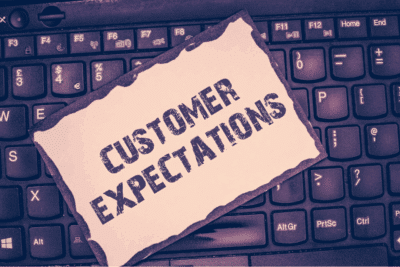Stop Losing Customers: Keep Your Website Running Smoothly with Regular Maintenance

When was the last time you took a look at your own website? Have you recently explored each page from the perspective of a potential client? Sure, you may share the link fairly often, but when did you last click on it yourself and check for errors? If you’re like many busy small business owners, it was most likely when you signed off on the last website refresh.
As much as you would like it to be, your website isn’t a “set it and forget it” project. It’s a sales team, a customer service resource, and a lead generator all in one. And, just like any other tool you have on your toolbelt, it needs regular maintenance to remain secure and functional.
When you hear that, if you’re thinking to yourself you’d rather do pretty much anything other than spend time navigating security updates, newly released patches, and internet performance enhancements, you’re not alone. But, while it might seem wholly sufficient if your website loads and the contact form works, it’s really not!
In fact, ignoring ongoing website maintenance exposes you to the risk of security breaches, compatibility issues, and performance issues. Being confronted with any one of these issues, let alone all three, will almost certainly cause potential customers to flee your site and most likely head straight to your competitors. That means avoiding the task of updating your company’s website could be costing your business leads, sales, and even worse, damaging your professional reputation.
How much is neglecting website maintenance costing you?

Research shows that 94% of first impressions for your website are made in 2.6 seconds. That’s about the same amount of time it takes to catch a falling object or wave hello to a neighbor. In those few seconds, your website needs to both capture the attention of users and introduce itself.
Since your website is often the first point of contact with potential customers, if that initial interaction is negative, you’re unlikely to recover. A broken website is the equivalent of wearing shorts and a tank top to a pitch meeting. Regardless of the quality of your work or product, your professional persona will always be tainted.
When a potential client encounters broken links, missing images, outdated information, poor performance, or error messages, it sends a message of incompetence. For example, in March 2020, millions of small business websites were able to quickly post messages on home and scheduling pages detailing their pandemic protocols for keeping clients and employees safe. But it’s still common to see those messages in place now. When those announcements are still in place five years later, it’s an obvious indicator that the business doesn’t care very much about its website or its professional presentation.
Aside from a negative first impression, when compatibility issues result in your pages displaying incorrectly or loading slowly, visitors will click away without hesitation. It’s called bounce rate, and if your website pages take more than three seconds to load, your bounce rate is likely to be relatively high. (If you don’t know your bounce rate, you can find this data in your website analytics.) This is just one more way ignoring website maintenance can negatively affect your business growth.
Below is an example of a website performance report using one of Google’s tools called Lighthouse.

Website maintenance affects your SEO
Small businesses, especially local businesses, live and die by SEO. As your site’s technical health declines, your position on the search engine results page (SERP) will, too. Think about the last time you clicked on a business page that was below the top three results, let alone on the second page. There’s just no way around it: The further your website falls in the search rankings, the less exposure to potential new clients you’ll receive.
Search engines reward websites with fresh content, secure infrastructure, and great user interface. Given this, you should be updating your site’s content regularly to indicate to web crawlers that your business is active, authoritative, and relevant. But that’s not enough. If a search engine determines that your website lacks the proper security to keep users safe, you won’t just be downranked. Your business can be penalized and entirely removed from the SERP.
Not only will you be losing customers who visit your website, but they won’t be finding your company at all.
Website security matters!

You might think your company is small enough to fly under the radar of hackers, but that isn’t always the case. Cybersecurity threats aren’t just limited to national and international corporations. Most hackers are indeed focused on stealing long lists containing personal and financial data. The fact of the matter is that 61% of cyberattacks today target small businesses. Hackers can target any site, but small businesses are particularly vulnerable because they often lack robust security measures due to the associated costs.
Once a hacker has gained access to your website, especially if it’s connected to your internal management systems, they can steal sensitive employee, customer, supplier, or proprietary design information. They won’t necessarily stop there, though. Hackers can also hijack your site for ransom, upload malicious code for their own nefarious purposes, or simply disrupt your operations for fun.
Regularly updating your site’s security systems, including firewalls, SSL/TSL certificates, and malware scanning tools, are the most important steps you can take to reliably prevent hackers from being able to take advantage of weaknesses within your website. Because, depending on the severity, a data breach can be a financial disaster, a reputation ruiner, or both. Competition in every industry is severe, and your professional reputation is fragile. Ignoring website security can mean losing the trust of those you work with in the blink of an eye.
Beyond professional concerns, your specific industry may require you to provide security compliance. If this is the case, not maintaining a secure website could result in penalties and fines. Regular updates to your website’s software, themes, and plugins are the only way to prevent exposure.
Compatibility isn’t just for dating
The technology you use to interact with the world around you moves quickly. Whether it’s browser updates, a new device release, or increased user experience expectations, not prioritizing compatibility is a foolish reason to lose customers. Considering the constant updates you experience, a website that worked six months ago might not display correctly on mobile or inexplicably start loading too slowly to be usable on desktop.
Monitoring your website’s compatibility keeps your site functional and visually consistent regardless of how customers are accessing it. Although it’s essential to keep up with design trends, compatibility is really about making sure users can access your site however they want or need to. So test your site regularly to ensure it’s accessible, fast, and visually accurate across all platforms and devices.
Don’t forget about your site’s content!

Website maintenance isn’t just about usability and security. Fresh, accurate content matters just as much. The copy on your site should always reflect your current capabilities, products, services, location, and hours of operation. Once again, outdated pricing, incorrect product descriptions, and ancient articles that still show at the top of your blog page send a less-than-desirable message to site visitors.
Along with your other maintenance tasks, you need to conduct regular content audits. That might sound complicated, but a content audit is just what it sounds like. Confirming the copy on your service pages and verifying that the information you share in your articles is accurate ensures your messaging remains relevant. While “evergreen” content is preferable, it doesn’t mean that facts and statistics never need to be updated.
Regularly reviewing the content on your website doesn’t just protect you from factual mistakes. It’s also about being perceived as a trustworthy, reliable business.
What is website maintenance, exactly?
A good maintenance plan covers security, compatibility, accessibility, and content. At a minimum, you should be regularly updating these components of your website.
- Software – Software updates can be set to automatically install. But you should still occasionally confirm you have the latest version of platform software and plugins and that they’re executing without any bugs.
- Security – Set your site to always be scanning for malware, suspicious activity, and vulnerabilities. If you receive a notification that something is wrong, take it seriously and deal with it right away.
- Data Backups – Verify that your website data is being saved, allowing you to restore it if an issue occurs. The last thing you want is to lose your entire site to a technological snafu.
- Performance – Pull up your site on your phone and desktop regularly to make sure an update hasn’t interfered with compatibility. This includes any ADA-compliant designs you’ve implemented.
- Content – Don’t trust your memory. Scan each page of your website to confirm what’s there is still correct.
- Functionality – Go through your forms, links, and scheduling tools to ensure they’re working properly. You won’t be collecting new leads if your contact form is broken!
While this may seem like quite the to-do list, as you familiarize yourself with the process, these tasks will become easier and quicker with time. And remember, each one is important to maintain the health of your website.
If you’re still tempted to skip one or two, hiring K-Kom to perform these checks will save you time and worry.







